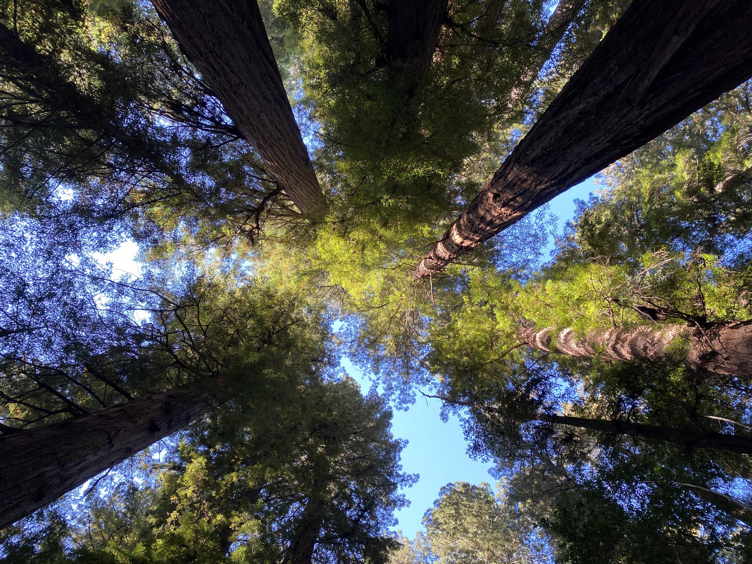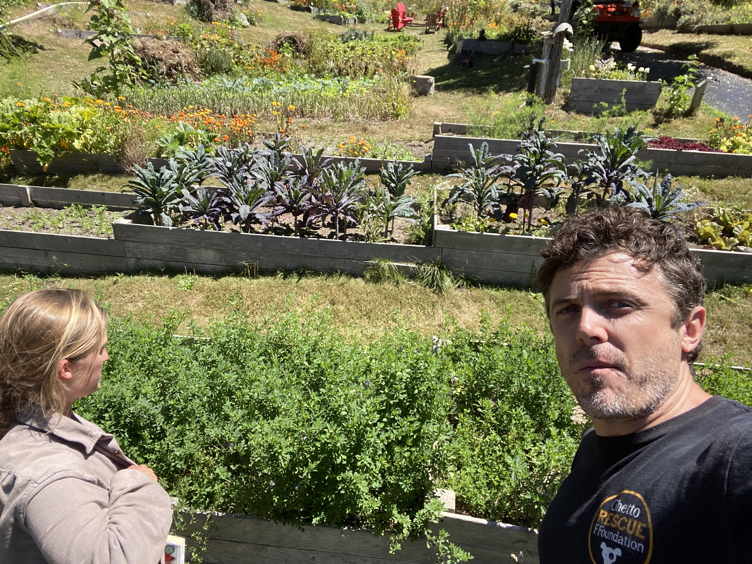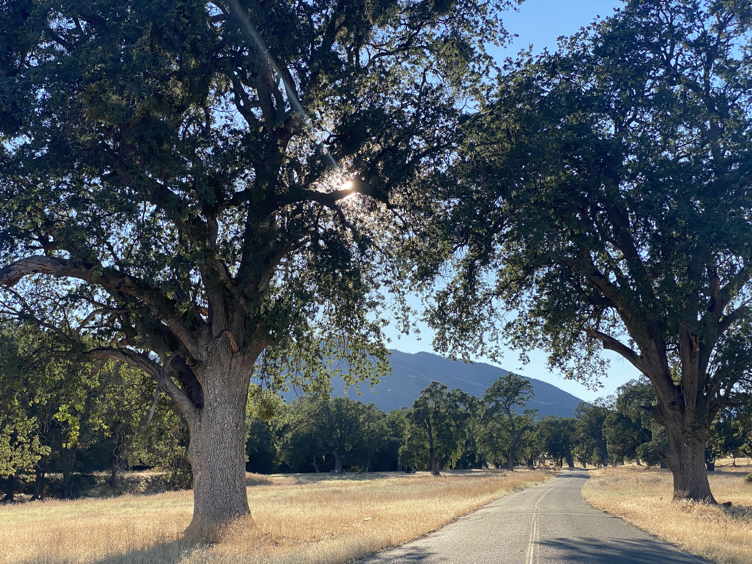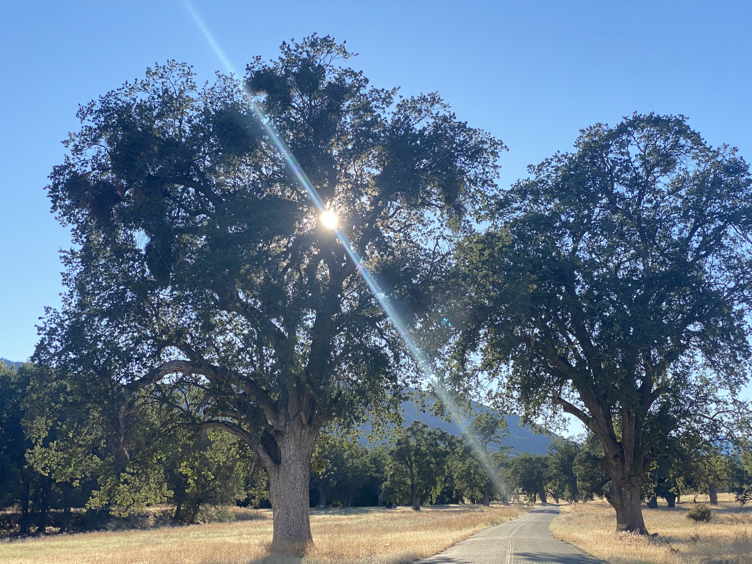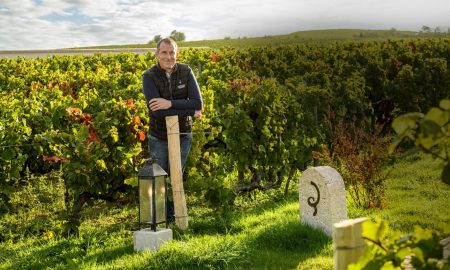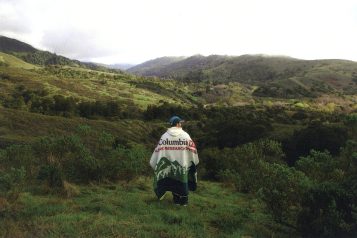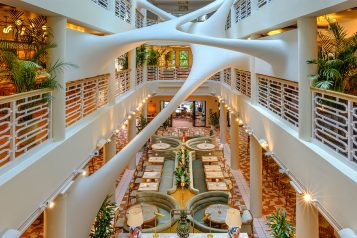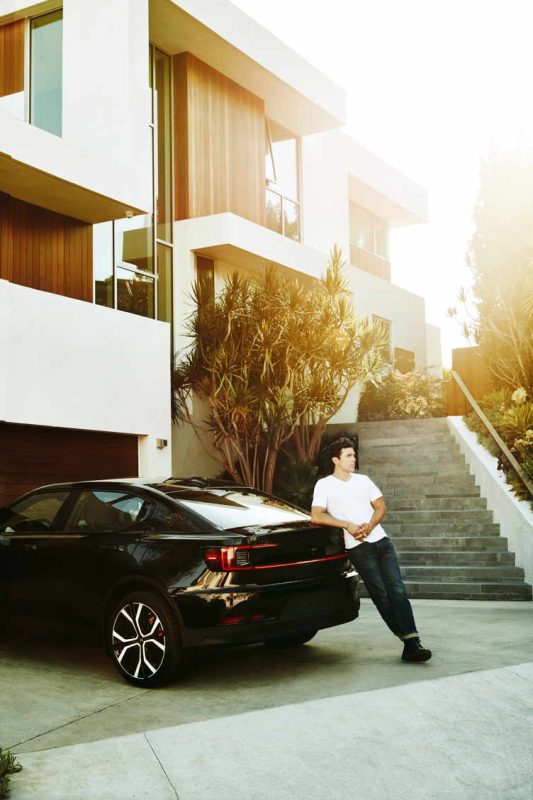
CASEY AFFLECK SET OUT ON AN ECO-FRIENDLY ROAD TRIP UP THE CALIFORNIA COAST. THIS IS WHAT HE DISCOVERED.
BY CASEY AFFLECK

IT’S AUGUST 2022, AND I’M TAKING A ROAD TRIP FROM Los Angeles to Portland. The route I’m planning is about 1,200 miles with some zig-zagging. It will take six days.
Next week, my son is going to college. He was raised in Los Angeles. He’s moving to New York City. Despite all the traveling I’ve done between the coasts, NYC has never felt as far away as it does now. Although this feels unrelated to what I’m doing, it’s not. My son leaving is the only thing on my mind as I embark on this trip.
But don’t get me wrong, I’m excited to take a certain car out on the open road: the Polestar 2. I first encountered Polestar in Europe, where I was filming a movie earlier this year. The film is science fiction, and for most of it I’m on a space ship headed to Jupiter. There are a few flashbacks to my life on Earth. In those flashbacks, I have a Polestar and a mustache. I liked driving it around, and inquired about getting one in the United States.
And get one I did — partially because I agreed to drive the car up the west coast and write about the journey for Haute Living. But really, I like any excuse to take a long road trip in a great car.
So yes, I’ve taken other road trips. I’ve driven across Europe, South America, Australia, and back and forth across the US and Canada a dozen times. I’ve taken every major interstate. I’ve circled and explored every city in America. I’ve done these trips with my kids, with my brother, with friends, with strangers, with colleagues, with dogs, with my girlfriend, and alone. I love all the little towns and people and the forests and wide open spaces. All of it. I love watching it change — sometimes subtly and sometimes suddenly.
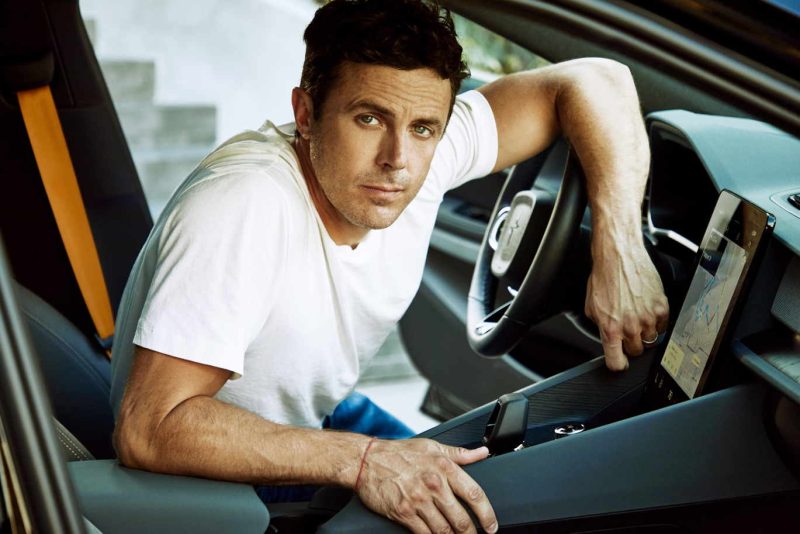
At 23, I drove across Ireland with my mother and her long-time boyfriend. Their relationship was coming to an end (again), so there was some tension, and I didn’t really want visitors on location, so there was some additional tension. They both seemed nervous being on the “wrong” side of the road. Also, for the whole first day of the trip, it rained very hard. I drove fast through this torrential downpour: wipers thumping away sheets of rain but not making a difference, cars whipping past in the “wrong” direction. Nobody spoke. My mom’s boyfriend finally broke one long, tense stretch of silence with a simple, “Jesus.” Looking back, I was torturing them for the misery they put me through in my adolescent years. Everything was fine in the end, but nobody brings that trip up.
Circa 1998, my father was living at a rehab facility in a small desert town in Southern California. He’d bottomed out in Massachusetts a few years earlier. He found his way to an affordable place to dry out once and for all. It was bleak where he was. Desert bleak. My brother followed him west a couple years later, and then I did the same when I graduated high school. Now I was headed back from California to Boston, going home to find work and maybe go back to college. I stopped in to see him. It was 116 degrees and he lived in a bungalow the size of a prison cell, attached to a larger concrete structure. He met me out front. I told him where I was headed. He stared at me skeptically. He smoked. He looked at my car. It was a 1969 Cadillac Sedan de Ville that cost $5,000 and reeked of gas on the inside, no matter how many times I replaced lines or cleaned its floor-mats. He said, “I wouldn’t take it on the highway.” I knew it was old, but I figured he was just trying out some parenting “caution” to make up for lost years. “Your roof will probably come off,” he added. I had no idea what he was talking about. The roof had been on the car for almost 30 years. A lot could go wrong with an old car but usually it wasn’t that the roof came off. I almost voiced this point, but didn’t. I understood that maybe my old man had drank so much over the years that his brains had gotten soggy. “I will be careful with my roof. Thanks, dad,” I said. Then we hit up an all-you-can-eat buffet, hugged, and I got on the I-10 headed east. Five days later the roof flew off my car. It was late at night and I was barreling down a rural road in Tennessee. The sudden noise was terrifying, and I wasn’t sure what had happened. Later, I learned that small air bubbles were visible where the vinyl met the metal above the windshield. This is what the old man spotted. All those long hours at high speeds filled the bubbles and loosened the roof, and it sailed away.
My kids and I take a long camping road trip every summer. We drive and cook and yell at each other. Most often we go coast to coast. Sometimes we explore other countries. Many of our best memories are from those trips. When they were 13 and 10, we drove across seven European countries in three weeks. We slept in a van on the side of the road, or in parking lots, or campgrounds. They coped. So many things went sideways. We were often too cold or too hot. There was boredom, sickness, and annoyance, but they dealt with it. They dealt with it because somewhere deep down inside, they knew that, all told, something good was happening. Those trips brought us closer, showed us new parts of the world and new parts of each other and ourselves. Those trips brought buried things to the surface and cleared the air. Being stuck in a car together does something good for us.
There have been many, many more, but I’m here to talk about a new road trip. The mission, again, is to drive from SoCal to the Canadian border to see what a road trip is like in an EV, and also to see if I can find luxury hotels that make a real effort to be environmentally friendly. To me, this means they have chargers for the electric vehicles, they consider sustainability in hotel operations, and they serve vegan meals.
Day 1

Photo Credit: El Encanto, a Belmond Hotel
Los Angeles to Santa Barbara. A short day. I leave late. The trip takes two hours and 100 miles. I start at home with a full charge, and when I arrive at El Encanto, A Belmond hotel, the valet is able to park and plug it in upon arrival, as promised. So great news there, and the hotel exceeds expectations in other ways, as well. It’s luxurious, yet relaxed and low-key, elegant in a Southwestern way. The rooms are big and well appointed. They’re clean and the service is friendly and attentive. The food is great; I have a wonderful vegan dinner and breakfast on the terrace overlooking the Santa Barbara coastline.
I’d planned to drive to the hotel, check in, eat, and drive back to LA for a friend’s wedding party that started at 11 p.m. I walk to my bungalow, enjoying the tranquil grounds and my room that overlooks the pool, toward the ocean. I eat. I decide to take a nap. At 10, I will head back to LA, go the wedding party, celebrate my friends, and then drive back to the hotel. The bed is so big and comfortable that I immediately fall asleep in my clothes on top of the sheets. I miss the wedding party. I feel bad.
But onward. This car I’m in whispers down the road and handles very well at high speeds. I go the speed limit. Totally. Promise. But I bet this car would feel breezy at 110.
As I pull out of town, streets are closed and people are moving around in big throngs. “Fiesta” is happening. It’s a parade I never see but everyone is headed that way. I don’t know much about it, except that people throw painted eggs full of confetti.
People move around for so many reasons. We migrate and wander and seek and follow and adventure and run away. Right now I’m basically wandering. I’m testing this car but also enjoying getting lost.
Day 2

Photo Credit: Portola Hotel & Spa
So far the Polestar is a handsome, quiet, fast, sturdy car.
Air traffic represents less than two-thirds of the global CO2 emissions, whereas road traffic accounts for around 10 percent of these direct emissions. A Polestar 2 will cost you anywhere between $48,000 and $70,000 to purchase, but only around $300 to take a road trip from one end of the country to the other. The cost of charging your electric vehicle on a road trip can vary, but will generally be between $10 and $30 per charge. That means financially, an electric vehicle is the most cost effective method of traveling and the best for the environment. In addition to its environmental and economical advantages, the Polestar 2 is also comfortable and drives well.
So yes, I’m enjoying driving it to my next stop of Monterey, California, which is four hours and 250 miles away. The Polestar 2 tells me I’ll need to stop along the way for a quick charge. I have two route options: traveling down Highway 1, a famously beautiful stretch of windy road, sometimes high up on the cliff’s edge and sometimes down at water level, or the 101, which is inland and mostly has views of dry farms.
Accidentally, I find myself inland. I want to cut across from the 101 to the 1. The road signs (and my phone’s GPS) say this would mean a long, long detour back down to where they intersect, hours south, so I decide to travel by my own internal compass and cut west toward the ocean on a small road that’s eventually marked “closed” (it wasn’t when I began). The hour of driving on this road is my favorite stretch. I know that if the road is really “closed” at some point, I’ll run out of battery and not make it back to a place where I can sleep, charge the car, or find water or food or cell signal. My life won’t be in danger, but it would be a big drag. I go anyway, and the road is beautiful. There are no cars, but there’s wildlife everywhere. The ponderosas are thriving. It’s quiet and pretty and I feel free. The sun is setting and I feel completely different than I did just a few hours ago. As it’s getting dark and I’m more than halfway to the coast, I turn a corner and see a large, locked, metal gate, and have to double back to the I-5. With two percent battery left, I arrive at a charging station and wait for the car to charge. I eat chips. It’s the best day of my trip.
That night I stay at the Portola Hotel & Spa in Monterey, which does not have chargers for any electric cars. However, it’s a pleasant experience; a quaint hotel that does offer some vegan menu items. The highlight of the Portola Hotel, for me, would have to be the fact that it’s so close to the Fisherman’s Wharf and the Monterey Bay, which is where I book a boat to take me out to sea so I can watch whales.
Day 3
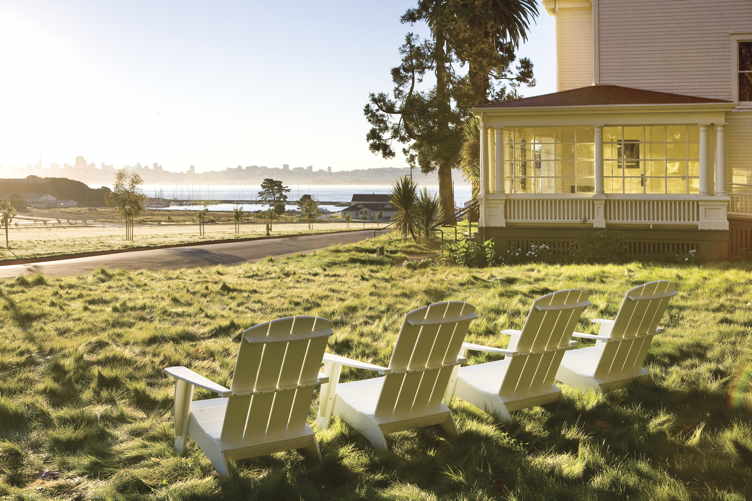
Photo Credit: Cavallo Point
At 7 a.m., I walk down the wharf and find Eddie’s Whale Watch. It’s a grey, chilly morning. The sea is flat. I’ve been whale watching before in Massachusetts. I’m skeptical that I’ll see any whales. Am I a pessimist, or something else? The sea is so big. I find it inconceivable that, in just two hours, I’m going to motor out and see a bunch of whales and then motor home. They move around so much. It all seems impossible.
Captain Dale tells me what to expect — it’s all about the anchovies. The sea lions drive the anchovies down. The whales, coming from deep, drive these same anchovies back to the surface. The anchovies are between a rock and hard place here. They swim deep to avoid being eaten by sea lions. They run into whales coming right at them. The birds also circle around all this carnage hoping to pick something off.
The boat idles on the placid water at dawn. It’s peaceful. Then, Dale points out that in the distance, the water is rippling. A few minutes later, whales appear at the surface. But I’m so far away. This dance happens several times before I finally ask Dale if we can move closer to the action. He sighs a little. He says, “They will come around.” What Dale is doing is patiently, wisely waiting for the whales to come to him. Chasing them would result in always being in the wrong place. He’s right. Eventually the whales are right next to the boat, and they’re amazing.
I then make my way to San Francisco, which is two-and-a-half hours and approximately 120 miles away. I wasn’t able to charge the car at the Portola Hotel, so I have to stop and charge at an Electrify America charging station in the parking lot of a mall in the middle of nowhere. The Polestar 2 finds the station for us.
Pulling into the bay, I look online for what might be happening. There’s a music festival, Outside Lands. Green Day, Jack Harlow, Phoebe Bridgers, and others are playing. I leave my car in a residential neighborhood and walk into the park, where the festival is taking place.
Jack Harlow has been on tour. He’s jet lagged from playing in Europe. Road life. I don’t know him, but I slip to the side of the stage and watch him from there. His manager is warm and easygoing. After the show, I talk to Jack for a while. We have a mutual friend — Leigh Kilton Smith. He asks about film. I ask about his tour. He’s smart, funny, and friendly. One of my favorite things to do is connect with other performers, to be reminded of the real people behind the public presentation. There’s often a lot of shared experiences that form the basis of a quick friendship.
After the show, I head to Cavallo Point, a luxurious lodge nestled at the northern end of the Golden Gate Bridge. I have a spectacular view of the bridge from my room. It’s so close you can ride to the bridge on a complimentary bike provided by the hotel. I don’t do that. I drive my EV up to the top of a nearby hill, get out, and look at the bridge and the city beyond. If I was transported back in time, I wouldn’t know how to tell the people of the past how to build a bridge like that. There are very few things I’d know how to reproduce for them. Not a phone or a combustion engine, not a toaster or a TV.
Day 4
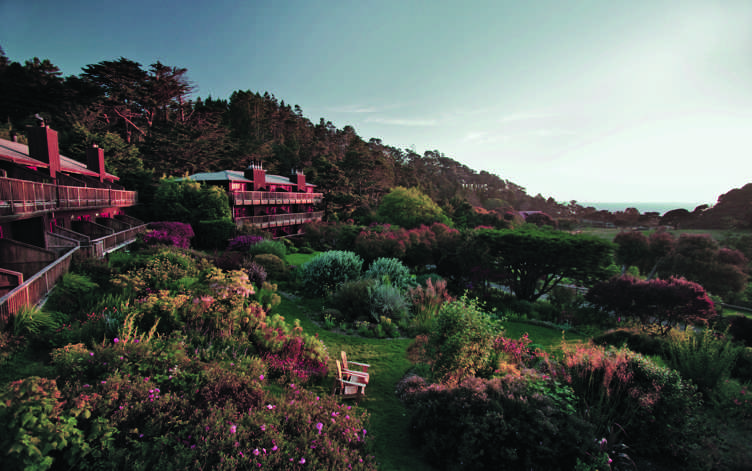
Photo Credit: Stanford Inn by the Sea
My favorite of all the places I stay during this trip is Stanford Inn & Resort in Mendocino, California. It’s the most unique, eco-friendly hotel I’ve ever had the pleasure of experiencing. As a vegan, I’m pleasantly surprised to learn that they not only have an entirely plant-based restaurant, but that it also has a variety of cuisines on the menu. It’s by far the best fine dining experience I’ve had all week. The folks at Stanford Inn grow all of their ingredients within ten acres of the property. The garden is so beautiful; you can tell there’s a lot of love for the plants that are grown there. They even go so far as to take me on a tour of the gardens and teach me how to grow my own crops, too. The organic produce, herbs, and fruit used at the Stanford Inn’s Ravens Restaurant substantially reduce their carbon footprint, and they compost all food and organic wastes, which are recycled into their gardens, virtually eliminating the use of outside fertilizers. They also have a curated library, and some of the guests are quite peculiar and unusual, such as llamas, horses, and donkeys. There’s a fireplace in my room, which is very cozy, and they provide wood, kindling, and matches for you. There’s an indoor saltwater pool, yoga classes, and a sandy river beach with kayak rentals, plus local artwork and views of the ocean. I find the whole stay to be quite peaceful. Like icing on a cake, it turns out they also have ample electric chargers that are compatible with all electric vehicle models. Plus, the owners and managers of the property could not be nicer. The breakfast is one of the best vegan breakfasts I’ve had that wasn’t home-cooked. In the morning, I walk down to the river and jump in, Wim Hof style.
Day 5
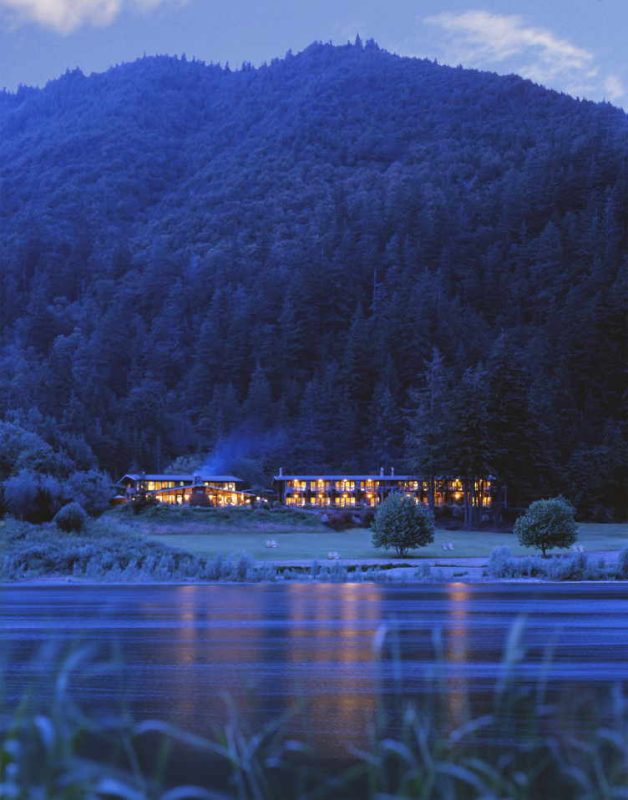
Photo Credit: Tu Tu’ Tun Lodge
Driving, driving, driving, and then I arrive at Tu Tu’ Tun Lodge. I arrive so late that I can’t get in. I also have no charge on the car and can only recline the seats and go to sleep. I like this because I remember, after a long day, that I don’t care at all where I am or how flat the bed is. A night manager finds me prone in the front seat and says they can unlock a room. When I wake in the morning, the view from the bedroom looks across a sloping lawn to a wide river and woods beyond. I eat outside and then walk down to the river and slip in. The current is strong and the water is cold. The car was never unpacked, so I’m on the road right away.
Day 6
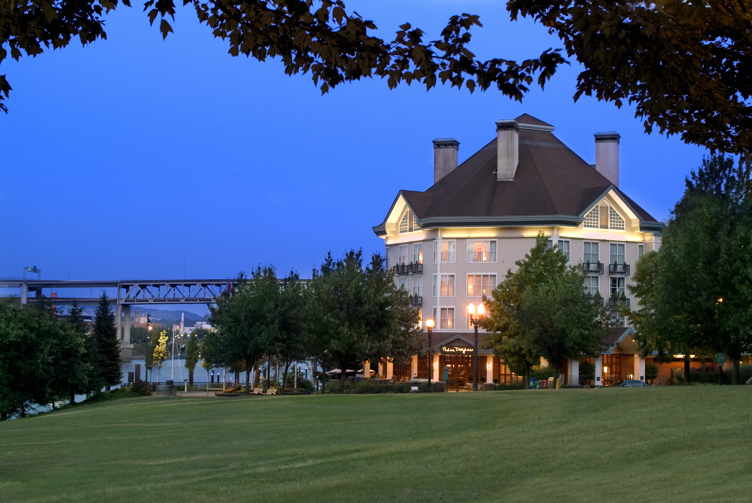
Photo Credit: Kimpton RiverPlace
Still driving. The Oregon coast is very nice. My last stop is the Kimpton RiverPlace Hotel, which occupies a picturesque spot on the Willamette River just south of downtown Portland. The clean, quiet, and spacious room exudes a stylish designer touch that sets it apart from typical chain hotel fare, and it’s really green, too. The Kimpton RiverPlace Hotel not only has chargers compatible with a Polestar 2, but they also have vegan doughnuts available for me in my room, which is nice (despite not being Dunkin’). I consider seeing some friends on Suave Island who live on a blueberry farm. It’s 125 minutes from downtown, and after dinner, I head out, but the rain turns me back. It’s definitely not beach weather, not even bonfire weather. I’m tired. It’s time to go home.
In Summary
In conclusion, the car is great. It’s fun to drive, comfortable, does what you want, looks good, and had no problems at all. I loved it. The hotels were, for the most part, meeting the new era of “green” living.
My favorite stretch of road was the closed one. I’ve always felt compelled to blaze my own trail, to go left where others went right, but even the choir needs practice, and the closed road reminded me that so much treasure is hidden off the beaten path. The ponderosas are the things I’ll remember from this trip.
I am happy to go home. Each day I have been thinking more and more about my son. For 18 years he has been under my roof. In a few weeks, he will move 3,000 miles away. I know he will be fine. It isn’t his safety or success that I worry about. His happiness is what I want. But maybe this, too, is foolish. He will be happy and sometimes unhappy. No life should be anything else. Of course, I hope he will experience more of the former. What I should wish for him is a full life, of ponderosas, loving travel companions, and whales. But I know that he already values these things. I know that he will seek them out. I know that he meets the fear of the unknown and far away with a brave and curious heart.
The Polestar 2
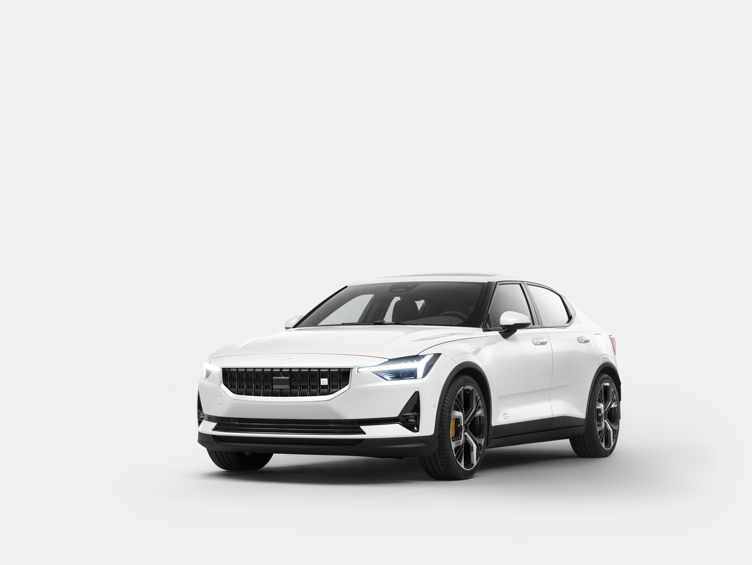
Photo Credit: Polestar
The way electric cars should be. Minimalist design. Powerful performance. The Polestar 2 propels the driving experience into the zero emissions future.
- Starting at $48,400 MSRP
- Up to 270 mi Range (EPA)†
- Up to 476 HP (350 kW)*
- 0-60 in 4.2 seconds*
- Infotainment with Google1 built-in
- 35 mins DC Public Charging/8
- Hours AC Home Charging
- Sustainable vegan interior options
Learn more at Polestar.com
*Available with optional Performance pack or the Performance pack software upgrade when available on Long Range Dual Motor variant.
*†EPA estimate for Long Range Dual Motor variant
* 1 Google, Google Play, Google Assistant and Google Maps are trademarks of Google LLC
Casey’s Snaps From the Road
